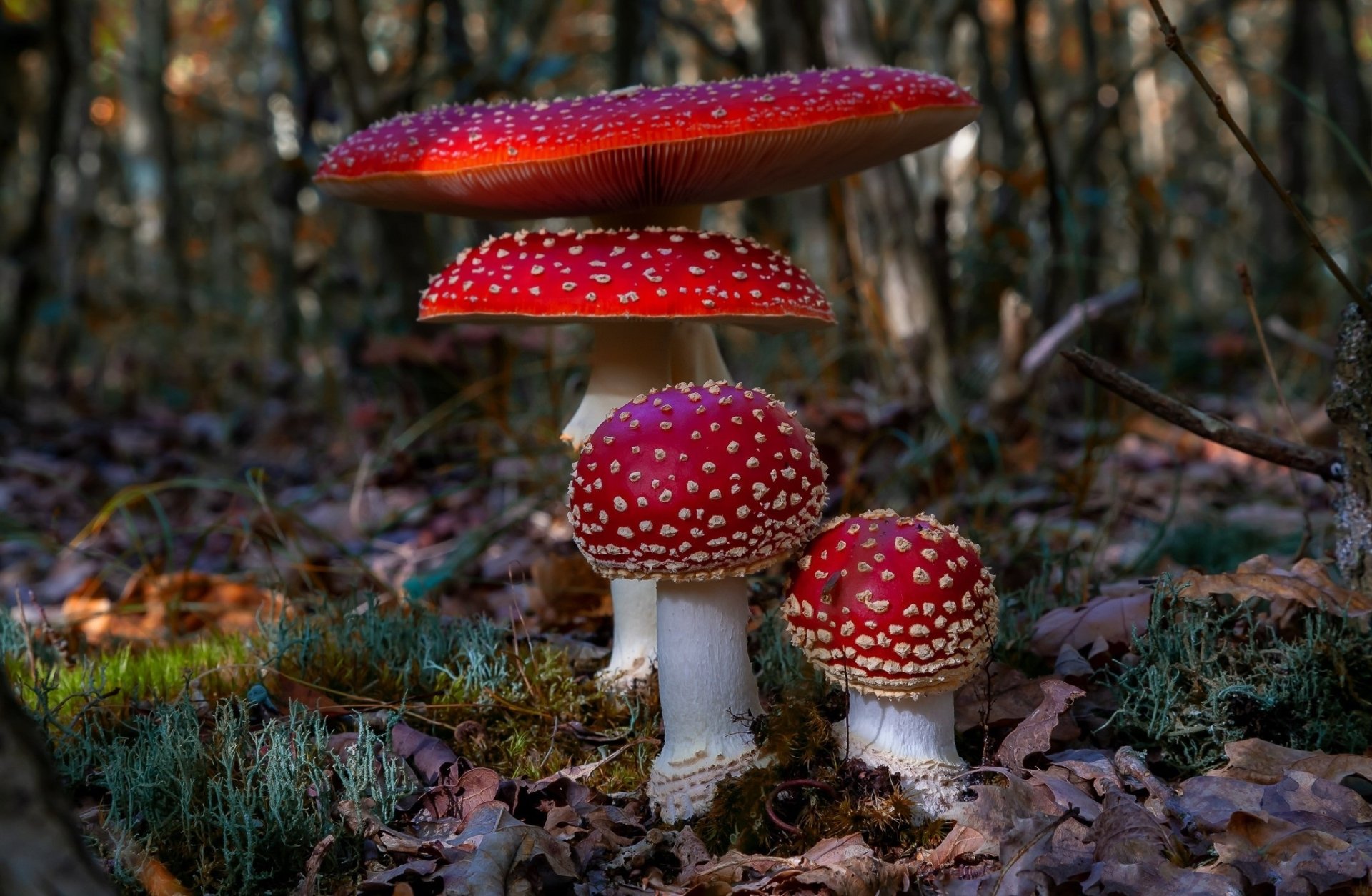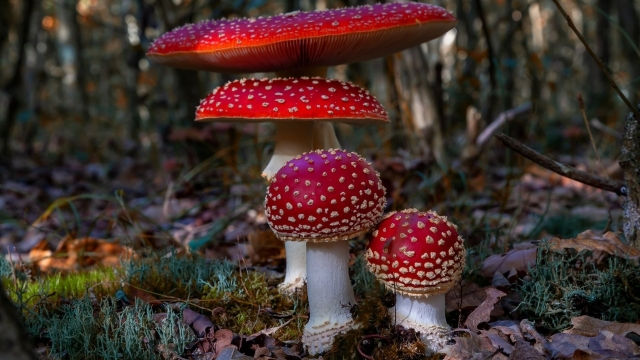
As fungal enthusiasts continue to explore the rich and mysterious world of mushroom cultivation, the secrets of mycelial magic are being unveiled inch by inch. Mushroom growing, once considered an ancient and enigmatic art, is now a thriving practice that allows us to nurture and appreciate these fascinating organisms in our own homes and gardens. Through patience, knowledge, and a touch of curiosity, individuals are unlocking the potential of mushroom cultivation, cultivating not only delicious and nutritious fungi but also a deeper connection with nature and the rhythms of life itself.
The process of mushroom growing is a gentle dance between science and art, requiring an understanding of the delicate balance that mushrooms need to thrive. It all begins with the mycelium, the intricate network of thread-like structures that weaves its way through the substrate, nourishing and preparing it for the eventual emergence of fruiting bodies. Whether cultivating gourmet varieties like oyster or shiitake mushrooms, or exploring the medicinal properties of reishi or lion’s mane, each species demands its own unique environmental conditions and substrate composition. By mastering the art of creating the perfect environment and providing the ideal growing medium, aspiring mycologists can embark on a journey of discovery, witnessing the wonders of nature unfold before their very eyes.
Entering into the world of mushroom cultivation opens up a realm of possibilities and rewards. Not only can one experience the joy of harvesting their own fresh and flavorsome fungi, but they also gain a newfound appreciation for the interplay of factors that contribute to successful cultivation. From the temperature and humidity levels to the choice of substrate and inoculation methods, every decision carries the potential for bountiful harvests or noble failures. The dedication required to evolve into a skilled cultivator is outweighed only by the excitement of watching mycelium colonize and mushrooms emerge, transforming ordinary spaces into vibrant, thriving ecosystems.
As we journey further into the realm of mushroom growing, we find ourselves captivated by the intricate workings of mycelial magic. With the secrets of successful cultivation slowly being unveiled, we have the opportunity to cultivate not just mushrooms but also a profound connection with nature’s hidden forces. So let us embark on this adventure together and delve into the world of mushroom cultivation, as we unravel the mysteries of mycelium and revel in the wonders it brings to our lives.
Choosing the Right Mushroom Species
When it comes to mushroom growing, selecting the right species is crucial for a successful harvest. The choice of mushroom species depends on various factors such as climate, growing conditions, and personal preference. In this section, we will explore a few popular mushroom species that are commonly cultivated.
-
White Button Mushroom: The white button mushroom (Agaricus bisporus) is one of the most popular choices for mushroom cultivation. It is known for its mild flavor and versatility in culinary applications. This mushroom species thrives in a temperature range of 55 to 60°F (13 to 16°C) and requires a substrate, typically comprised of compost and straw, for optimal growth.
-
Oyster Mushroom: Oyster mushrooms (Pleurotus ostreatus) are highly favored by mushroom enthusiasts due to their rapid growth and delicious taste. They come in various colors, including white, gray, and yellow. Oyster mushrooms prefer a slightly higher temperature range of 65 to 75°F (18 to 24°C) and can be cultivated on a wide range of substrates, such as straw, sawdust, or even coffee grounds.
-
Shiitake Mushroom: Shiitake mushrooms (Lentinula edodes) have gained popularity not only for their culinary appeal but also for their potential health benefits. These mushrooms possess a unique smoky flavor and a meaty texture. Shiitakes thrive in a temperature range of 55 to 75°F (13 to 24°C) and are typically cultivated on sawdust blocks or supplemented hardwood logs.
Remember, these are just a few examples of mushroom species suitable for cultivation. Depending on your specific growing conditions and preferences, there are numerous other species to explore, including more exotic varieties like lion’s mane, reishi, and enoki mushrooms. With careful research and consideration, you can choose the perfect mushroom species to embark on your mycelial magic journey.
Creating the Ideal Growing Environment
To successfully cultivate mushrooms, creating the right growing environment is essential. Providing the ideal conditions ensures the healthy development of mycelium and fruitful mushroom yields. Here are three key factors to consider when setting up your mushroom growing environment.
Temperature
Maintaining the proper temperature is crucial for mushroom cultivation. Different species have different temperature requirements, so it is important to research and understand the optimal temperature range for the specific mushrooms you are growing. Generally, temperatures between 65°F and 75°F (18°C to 24°C) are suitable for many common mushroom varieties. Keeping a consistent temperature throughout the growth cycle helps promote successful development and prevents the growth of contaminants.
Humidity
Mushrooms thrive in humid environments, as moisture plays a vital role in their growth. Optimal humidity ranges between 80% and 90% for most mushroom species. To achieve this, you can use various methods such as misting the growing area with water or utilizing humidifiers. It is essential to regularly monitor and adjust humidity levels to prevent drying out or excessive moisture, both of which can hinder mushroom growth.
Light
While mushrooms do not require direct sunlight for photosynthesis like plants, they do require some light exposure to trigger certain growth processes. However, they are typically light-sensitive and thrive in low-light conditions. Indirect or ambient light from fluorescent bulbs or natural daylight filtering through a translucent covering is usually sufficient. It is important to strike a balance between providing enough light for development without exposing the mushrooms to intense or prolonged direct sunlight, which can be detrimental.
By carefully controlling the temperature, humidity, and light in your mushroom growing environment, you can create optimal conditions for successful cultivation. These factors contribute to the growth and development of healthy mycelium, leading to the production of bountiful, flavorful mushrooms.
Care and Maintenance of Mushroom Cultivation
Mushroom cultivation requires consistent care and maintenance to ensure a successful and abundant harvest. Here are some essential practices to keep in mind:
- Golden Teacher Mushroom
Maintaining Proper Moisture Levels: Mushrooms thrive in a humid environment, so it is crucial to monitor and regulate moisture levels within the growing area. Use a spray bottle to mist the growing medium regularly, ensuring it remains damp but not waterlogged. Covering the cultivation area with a plastic sheet can help retain moisture and create a suitable microclimate for the mushrooms to flourish.
-
Managing Temperature: Different mushroom varieties have specific temperature requirements for optimal growth. It is vital to maintain the ideal temperature range to promote healthy mycelium development and fruiting. Utilize a thermometer to monitor the temperature consistently and make necessary adjustments with heating or cooling methods as needed.
-
Ensuring Proper Ventilation: While maintaining humidity is essential, ensuring adequate ventilation is equally crucial in mushroom cultivation. Mushrooms require fresh airflow to prevent the buildup of carbon dioxide and excess humidity, which can lead to bacterial or fungal infections. Strategically placed fans or vents can help achieve proper air circulation within the cultivation area.
-
Observing Hygiene Practices: Maintaining cleanliness throughout the mushroom cultivation process is imperative to prevent contamination and diseases. Before handling any equipment or entering the growing area, make sure to wash your hands thoroughly and wear sterilized gloves. Regularly sanitize tools, trays, and containers using a suitable disinfectant to minimize the risk of introducing harmful organisms.
-
Monitoring and Managing Pest Infestations: Pests such as mites, flies, and other insects can pose a threat to mushroom cultivation. Regularly inspect the growing area for any signs of pest infestation, including eggs, larvae, or webbing. If detected, promptly take appropriate measures such as using organic insecticides or introducing natural predators to control the pest population.
Remember, successful mushroom cultivation requires dedication and attention to detail. By following these care and maintenance practices, you can create a optimal environment for mycelial magic to unfold, yielding abundant and healthy mushrooms.
